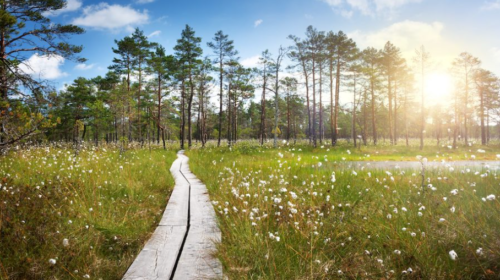
 Plants that produce peat are called peat formers. Their death and incomplete decomposition, which occurs under conditions of lack of oxygen and excess moisture, leads to the appearance of useful fertilizer. In the peat layer – approximately at a depth of 50 centimeters – microorganisms (fungi, invertebrates, bacteria) consume decay products, reducing the weight of the phytomass. However, not all processed products turn into peat – about 70% of dead plants become food for their “relatives”, are washed out or evaporate into the atmosphere.
Plants that produce peat are called peat formers. Their death and incomplete decomposition, which occurs under conditions of lack of oxygen and excess moisture, leads to the appearance of useful fertilizer. In the peat layer – approximately at a depth of 50 centimeters – microorganisms (fungi, invertebrates, bacteria) consume decay products, reducing the weight of the phytomass. However, not all processed products turn into peat – about 70% of dead plants become food for their “relatives”, are washed out or evaporate into the atmosphere.
If the peat deposit has preserved vegetation cover, then the formation process continues to this day. How large the growth of a peat deposit can be determined by herbaceous plants, the green chlorophyll-bearing part of sphagnum, various root systems, and coniferous trees.
The accumulation of dead organic matter occurs over thousands of years – the age of the first finds dates back to the Carboniferous (the penultimate geological period). Due to the stopping of decomposition processes, peat is able to retain its properties for thousands of years, but the rate of peat accumulation is difficult to determine. The point is that this process depends on plant groups, geography and climate of peat formation.